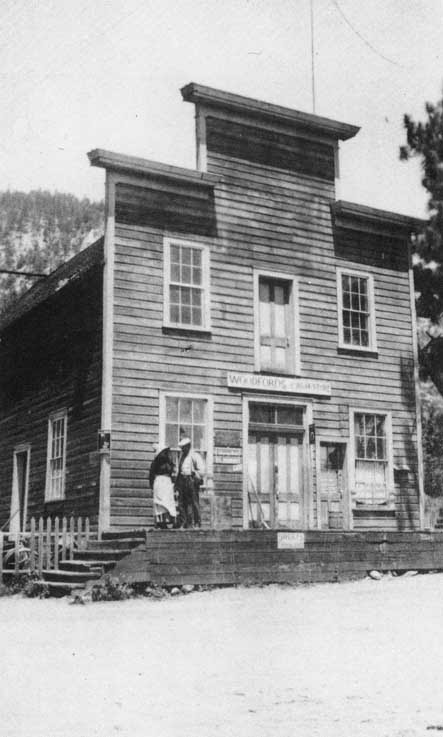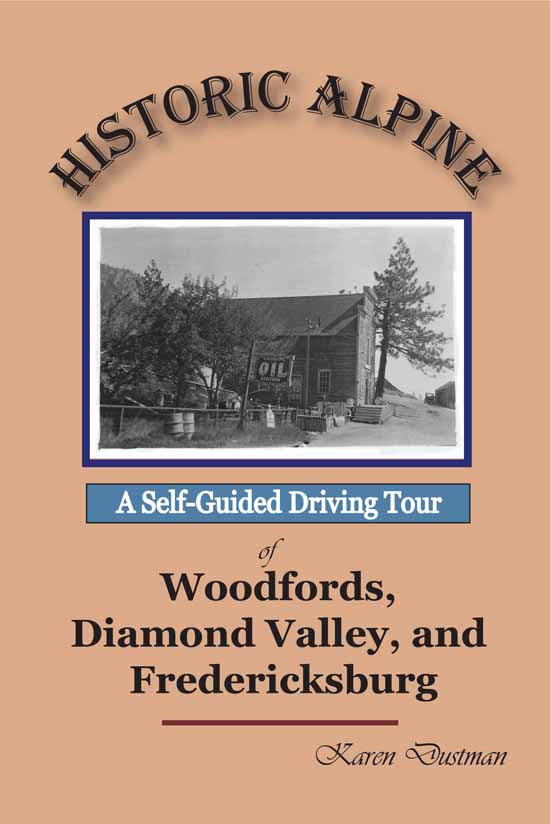If you’ve ever stopped at Woodfords, you may have seen the Wade House — and probably never gave it a second glance. But this small, nondescript green house has an amazing claim to fame: it’s said to be the oldest continuously-inhabited dwelling on the entire Eastern Sierra!

The original cabin (likely just a single room) was built by mill-builder Thomas Knott when he arrived in 1853. The cabin was sold that same year to John Cary, when Knott moved to Mormon Station to build yet another mill (one for which he would never get paid!) Some of the boards in the Wade House are said to be 18 and 24 inches in width, and probably were the product of Knott’s early sawmill.

Long before white settlers ever arrived, of course, the area around what is Woodfords today was a popular gathering spot and campsite for local Washo. Some of their descendants still live nearby. The trail up Carson Canyon (today’s Highway 88) is said to have been a major Native American trading route, used by Native Americans for centuries as they traded obsidian and pine nuts for acorn and other goods on the other side of the Sierra.
Cary sold the cabin to William Wade and his wife, Clarissa in the early 1860s. The Wades had crossed the plains in 1853 by wagon and settled initially near Fredericksburg. They moved here to Woodfords in 1858, where William was employed as a mill-hand at Cary’s lumber mill. He would later serve as the town’s postmaster and the local justice of the peace.

William’s younger brother, Orville, later came west as well with his wife and children. Orville ran a store and operated a small hotel here at Woodfords. Could the large addition to the Wade House have been added for them? We’ll probably never know for sure, but take a look at the left-hand section of building in top photo, above.
After nearly twenty happy years here at Woodfords, William Wade died in 1877 — the result of a terrible mistake. His son, James, had erysipelas, a bacterial infection of the skin. William came home one day with an open cut on his own wrist and, seeing James’ medicine bottle, dabbed a bit of the remedy on the wound, using a feather which his son had also used as an applicator. Within a few days the mistake became obvious: the infection spread through William’s body. Both his arms swelled up terribly and “mortification” (gangrene) set in. Concerned neighbors brought William to Genoa Hot Springs for treatment, but the doctor there pronounced it too late. The horrible swelling continued to spread, finally reaching William’s mouth and throat, and he died there at Walley’s from asphyxiation.
William’s brother Orville left Woodfords the following year for Oregon. Clarissa, now a widow, continued to live alone in the old Wade house, taking in boarders to help make ends meet. She passed away there in her home in January, 1890, one of the most severe winters on record. There was no way to bury her in the frozen earth, so townsfolk planted her body temporarily in a snowdrift until the spring thaw set in, when a proper grave could be prepared.

Clarissa — and most likely her husband, William, too — now rest in peace in the old graveyard just up the road from the old Wade House where they lived so long.
____________________
Enjoyed this story? We’d love it if you leave us a comment below!
Like to read more Sierra history stories like this, hot off the presses, as soon as they come out? Sign up for our free history newsletter at the top right of this page!
#AlpineCounty #History

The winter of 1889-1890 was indeed severe. It bankrupted many a stockman including future Governor John Sparks’ partner John Tinnin. The next spring (1890) Sparks with a new partner branded only 60 calves. The Sparks outfit
had been branding about 16,000 calves in the prior years. It was cold – well below zero -for a prolonged period of time and the snow on the level in Northeastern Nevada exceeded 36 inches on the level. Cattle became “poor” and literally froze to death for lack of feed. After that winter stockmen across the entire state began to put up hay for winter feed and bring their cattle in from the open range.
I always wondered about the history of that building. I love your detail. Thanks for your hard work! The results are so worthwhile.
Thanks so much, Carol! Your kind feedback keeps us excited about finding more fun “hidden history”!!
Great article, Karen. I’m ready to bring Clarissa to life. See you next Saturday to rehearse!
Thanks so much, Jane! Your great help is so appreciated!! You will make a *great* Clarissa! : ) See you Saturday…
Great Story, Thank You!
Thanks so much, Russ! So glad you liked the story! Much appreciated.